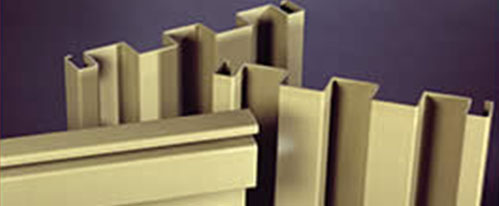FRP Baffle Panels Vs Redwood & Concrete
Water is the world’s most valuable resource. Although 70% of the Earth is covered in it, a mere 2% of that water is fresh, and as much of 1.6% of that freshwater is frozen in ice caps and glaciers. This leaves just 0.4% for a growing global population. Yet the seeming abundance of water in the US is increasingly under threat, and greater emphases on wastewater treatment and water reclamation infrastructures and technologies are needed to combat the risks of domestic water stress and scarcity.
The infrastructures of municipal water treatment plants are under greater scrutiny than ever before, and process engineers are always on the lookout for improved methods and components that can increase the yield of safe, clean water.
Baffle Panels in Water Treatment
Water baffle systems are essential in effectively processing wastewater so that it is safe to discharge into the environment and reservoirs. Baffle panels are essentially flow control systems designed to increase the retention times of water volumes to improve both sedimentation – through Stoke’s Law – and filtration processes.
Both primary and secondary wastewater treatment are concerned with sedimentation, which describes the process of solids and particulates separating from a liquid and settling on the bottom of a container. In the case of wastewater treatment, sewage is contained in what is known as a quiescent basin – typically formed using baffle panel walls – until it separates into solids (sediment) at the bottom, unclean water above that, and a greasy surface layer comprised of oils and lighter solids floating on the surface. This is known as coagulation; a process that can force baffle panels to contend with numerous aggressive compounds.

Concrete faces similar degradation issues and is a poor alternative from the perspective of global water conservation. Recent research has shown that water use in concrete production is inordinately high, equalling the annual domestic use of roughly 145 million US residents.
Strongwell Baffle Panels: A New Industry Standard
Strongwell has pioneered the use of industry-leading fiber-reinforced composite (FRP) baffle panels at every stage in primary, secondary, and tertiary wastewater treatment and water reclamation. Our baffle panel systems have demonstrated unmatched performance during coagulation, corresponding to greater maximum water yields than possible with either redwood or concrete. With exceptional corrosion-resistant properties and outstanding strength-to-weight characteristics, our FRP baffle panels can successfully improve water yields and reduce ongoing process costs to provide a manifold of KPI improvements for process engineers in a demanding industry.
Our baffle panels have successfully been integrated into aeration and contact chambers, retention basins, and complex bioreactors. They are uniquely poised to meet the changing demands placed upon municipalities by extending the retention times of wastewater in lagoons to facilitate ultraviolet (UV) disinfection. If you would like more information about how Strongwell baffle panels have set a new industry standard in helping reduce the risks of persistent water stress in the US, explore our case studies below:
- Case Study: Baffle Panels Used to Upgrade Retention Basins
- Case Study: Composites Aid Coagulation and Flocculation Processes
Otherwise, contact a member of the Strongwell team today with any questions about our FRP baffle panel systems.
References: